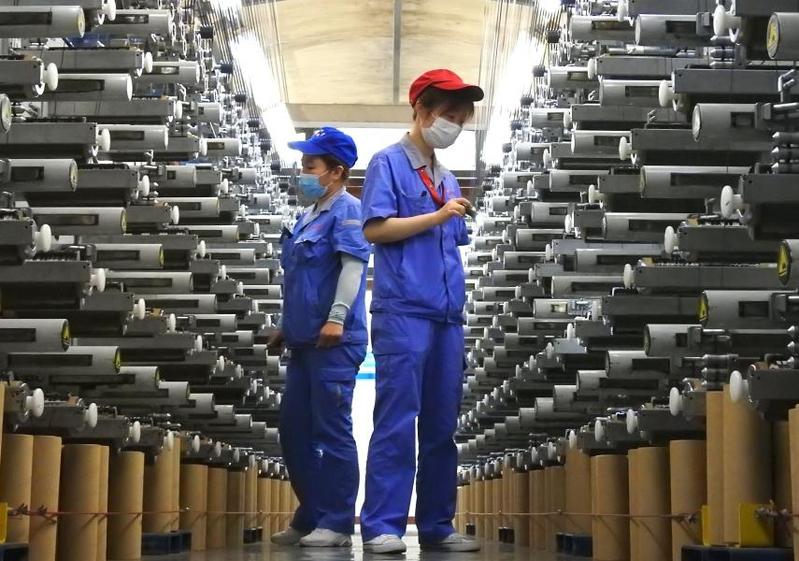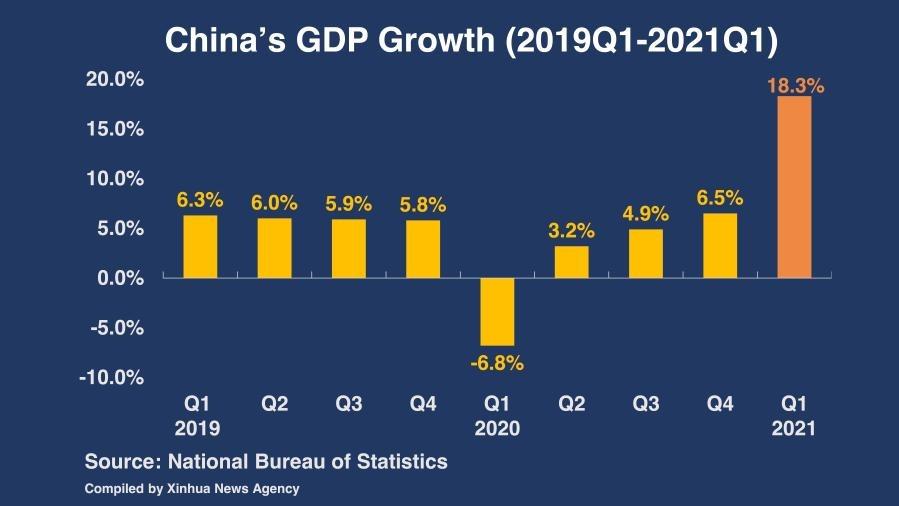 Workers check a production line at Lianyungang Economic and Technological Development Area in Lianyungang, east China's Jiangsu Province on July 16, 2020. (GENG YUHE / XINHUA)
Workers check a production line at Lianyungang Economic and Technological Development Area in Lianyungang, east China's Jiangsu Province on July 16, 2020. (GENG YUHE / XINHUA)
Stronger fiscal policies, targeted monetary policy easing expected to prop up growth
China's economy is expected to rebound in the second half of the year, and the country has plenty of room for macro policy support and sufficient policy tools in reserve to prop up growth, economists and analysts said.
They expect to see a gradual recovery in the coming months in some key economic indicators with stronger fiscal policies and targeted monetary policy easing, including infrastructure spending, financial support for small and medium-sized enterprises, and cuts in the reserve requirement ratio and policy rates.
The World Bank report added that China's growth momentum is expected to rebound in the second half of 2022, boosted by aggressive fiscal stimulus, monetary easing and a further relaxation of housing sector regulation
Their remarks were issued as China's economy has been severely affected by a resurgence in domestic COVID-19 cases and changes in the global environment after a strong start in 2022.
The World Bank said in a report released on Wednesday that it has revised its economic forecast for China down to 4.3 percent this year, from 5.1 percent in December, amid a deterioration in the global environment and the spread of COVID-19.
READ MORE: China's economy to recover gradually from Omicron impacts
The report added that China's growth momentum is expected to rebound in the second half of 2022, boosted by aggressive fiscal stimulus, monetary easing and a further relaxation of housing sector regulation. The country's gross domestic product growth is expected to rise to 5.2 percent in 2023.
"In the short term, China faces the dual challenge of balancing COVID-19 mitigation with supporting economic growth," said Martin Raiser, World Bank country director for China.
The report said China's investment growth, driven by infrastructure investment, is projected to accelerate, partly offsetting weakness in real consumption growth.
As external demand weakens and supply-side constraints persist, the current account surplus is projected to narrow to 1.3 percent of GDP in 2022. With higher imported food and fuel prices, consumer price inflation is expected to rise but remain below the government's annual inflation target of about 3 percent.
On the upside, if the pandemic is brought under control and domestic restrictions are fully lifted, China's full year growth could be higher than currently projected, thanks to recently announced additional stimulus measures, the report said.
The State Council, China's Cabinet, recently unveiled a package of detailed policy measures to further stabilize the economy, covering fiscal and financial policies as well as measures on investment, consumption and industrial and supply chains, as well as the livelihood of people.
ALSO READ: China's economy maintains momentum despite fluctuations
The 33 detailed measures include the implementation of value-added tax credit refunds on a larger scale, speeding up the issuance of local government special bonds and increasing financial support for infrastructure and major projects.
Cheng Qiang, chief macro analyst at CITIC Securities, said China is likely to see a rebound in major indicators including industrial production, investment, consumption and exports in May with the gradual resumption of work and production. The analyst added that China's economy will continue to improve in June as COVID outbreaks gradually fade and the government puts the package of measures into place.
 China's GDP growth for the first quarter of 2019 to the first quarter of 2021 (XINHUA)
China's GDP growth for the first quarter of 2019 to the first quarter of 2021 (XINHUA)
Steady gains
Over the past few weeks, China's benchmark CSI 300 index of shares listed in the Shanghai and Shenzhen stock exchanges registered steady gains as stronger government policy support and containment of the pandemic aided investor sentiment.
Despite weakening economic activity in April, given a drop in both consumption and industrial production, Wu said his team expects growth to start picking up more visibly in June as Shanghai gradually returns to normalcy following a COVID-19 outbreak
The CSI 300 index has risen more than 10 percent since late April to Wednesday's close at 4,219.81 points, a sign of gradual recovery in the world's second-largest economy.
Tommy Wu, lead economist at Oxford Economics, said the think tank had also forecast a recovery in the second half of the year, bolstered by policy stimulus.
Despite weakening economic activity in April, given a drop in both consumption and industrial production, Wu said his team expects growth to start picking up more visibly in June as Shanghai gradually returns to normalcy following a COVID-19 outbreak.
"In our baseline, we assume China's industrial production and export activity will return closer to normality in Q3, while the impact of COVID restrictions on consumption is likely to linger longer," he added.
Looking ahead, Wu said he expects the People's Bank of China, the nation's central bank, to guide market interest rates and loan prime rates lower.
ALSO READ: China's economic rebound seen despite US tightening
"We push our call for a cut to the medium-term lending facility rate and reserve requirement ratio to Q3 from Q2 previously-which will affect interest rates across the board-to bolster the economic rebound when sentiment starts to recover," he said.
Considering factors like China's relatively low inflation rate and sufficient foreign exchange reserves, economic experts said China has ample tools and room to step up fiscal and monetary support.
Data from the State Administration of Foreign Exchange showed that China's foreign exchange reserves rose to $3.1278 trillion at the end of May, up $8.1 billion or 0.26 percent from the end of April.



